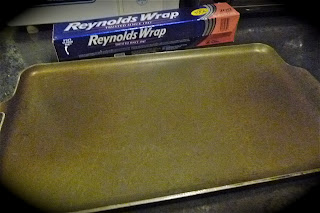Animal fibers are also known as protein fibers which are chains of amino acids that have been formed.
Sources of protein fibers are of course animals. Protein fibers come from their wool (fleece), hair, fur, or extruded filament (meaning something that is not attached to the animal, but comes out of it like milk comes from a cow. Not that there is any fabric made of milk... that I know of. Actually... Hang on. I think I read an article about milk fabric a few days ago. I don't really know anything beyond what's in the article because it's such a new invention, but here is the article. Oh. They've also made some garments out of wine.).
Sorry for that little tangent. Now I'm going to talk about wool.
Wool
- 90% comes from sheep
- usually referred to as fleece
- over 400 breeds
- full fleece = all wool from one sheep
- One full fleece is 151 lbs.
- Once cleaned, it is about 7 lbs.
- Regulations are set by the Department of Agriculture in the USA.
- Labels and guidelines are set by the Federal Trade Commission in the USA.
- World productions of Wool - 2009
- Top 9 (I guess I forgot to write down #10)
- 1) Australia 2) China 3) New Zealand 4) United Kingdom 5) Argentina 6) Morocco 7) Sudan 8) Russia 9) Syrian Arab Republic
- Organic Wool
- Not dipped in parasiticides (to remove fleas/tics)
- Do not exceed the natural carrying capacity of the land
- Farmers get better price
- Well supervised
- For more information about organic visit The Organic Trade Association's Website
- Most common sheep we get wool from
- Merino sheep- specific to Australia. Has good quality wool.
- American Cormo- specific to the USA
- California Red - has little red hairs in the white fleece
- Exotic Sheep Breeds
- Icelandic
- Karakul Sheep
- oldest sheep known to man
- Mesopotamia
- used for rug making (specifically tibetan rugs)
- variety of colors
- when lambs are born, they have fur rather than fleece. People kill the baby lamb for the fur before it is even three days old.
- Types of Wool
- Navajo Churro
- "carpet wool" sheep
- coarse, low grade
- Examples: Icelandic sheep, karakul sheep, navajo sheep, churro sheep
- Jacob Sheep
- medium length fiber, mixed color
- Leicester
- "long wool" sheep
- long stapled fibers
- preferred by hand spinners
- Specialty Wools
- Alpaca
- 19 different shades
- From Peru
- Llama
- Coarser hair
- Kashmir Goat
- From Northern Asia around Turkey and India.
- Some scarves are made out of Kashmir and silk. The knock off scarves are mostly wool.
- Angora Goats (Mohair)
- looks kind of like a poodle
- very small and domesticated
- Angora Rabbit
- More hair than fur
- Comes in different colors
- When a label says "Angora" it means it is Angora Rabbit. Mohair comes from the Angora Goat, not "Angora."
- Vicuna
- was endangered and under protection because it is hard to shear them
- people had to be trained to properly shear the vicuna
- Camel
- Camel hair down
- Camels molt. You want the mold "down"
- "Down" is the hair underneath the body. It's softer than the top hair.
- Down is from the underside of the animal and is very expensive.
- Alaskan musk ox
- wool is known as Qiviut (fabric/fiber)
- use "down"
- Gathering Wool
- shearing- electric buzzer. shear once a year.
- Process after shearing
- Cleaning off vegetation, dirt, and lanolin (lamb oil/grease).
- Sorting/skirting
- Carding- passes the clean, dry wool through a system of wire rollers to align, clean, and straighten the fibers and remove vegetable matter.
- Combing
- Roving
- Spinning yarn or felted
- What is shearling?
- hide of sheep
- Used for:
- Medical - prevents bedsores
- Rugs or throws
- Interiors
- A typical shearling pelt has leather or sueded leather on one side and shorn fibers on the other side
- Wool Felting
- Felt is a non-woven fabric.
- To felt wool you must get it wet, heat it, and then agitate it. (this is for wet felting not needle felting) It also helps to add soap.
- The oldest evidence of felting knowledge was found in Turkey dating back to 6500-3000 B.C.
- Types of felting: wet, dry/needle felting, and nuno felting
- Properties of Wool
- Aesthetics
- Texture
- Matte finish
- loft
- Comfort
- hygroscopic- water rolls off
- absorbant
- thermo retention - keeps you warm
- specific gravity - how dense it is
- Durability
- flame resistant
- flexibility, elongation
- weaker when wet
- Appearance retention
- resilience - resists wrinkling
- elasticity
- elongation
- Care
- wrinkle resistant
- Does not show soil easily
- harmed by dry heat, alkali soap, oxidizing agents (bleach)
- Harmed by moths
- moths are attracted to the sulfur in wool
- Do not use mothballs
- Can use lavender or cedar.
- Cost
- Care- dry cleaning expensive
- specialty wools cost more
- History of sheep
- www.sheepusa.org
One more other quick note/fun fact about wool garments: If you're walking down the streets in Manhattan, you're likely to see people selling 'Pashmina' scarves. There is no such thing as a pashmina goat. Pashmina is simply a cashmere blend. The scarves on the street of the big city are usually a cheaper cashmere blend accompanied by a cheaper fiber as well. The nicer scarves are a cashmere blend combined with silk though they still often put the 'Pashmina' label on it. Just to be clear: the Pashmina goat does not exist. Though this in no way stops the scarves from being comfy and cute; I own two.




















